8-minute read
keywords: ethology
Death, and its attendant grief, is on that infamous shortlist of two things that are sure in life. But are humans alone in understanding death? To prepare for reviewing Susana Monsó’s new book Playing Possum: How Animals Understand Death, I reach back in time to 2013 to a highly relevant book that has been sitting on my shelf unread for too long. In How Animals Grieve, anthropologist Barbara J. King mines a compelling vein of anecdotes that strongly suggest this emotion is not uniquely human. This, then, is the first of a two-part review exploring how our evolutionary next of kin experience and understand death.
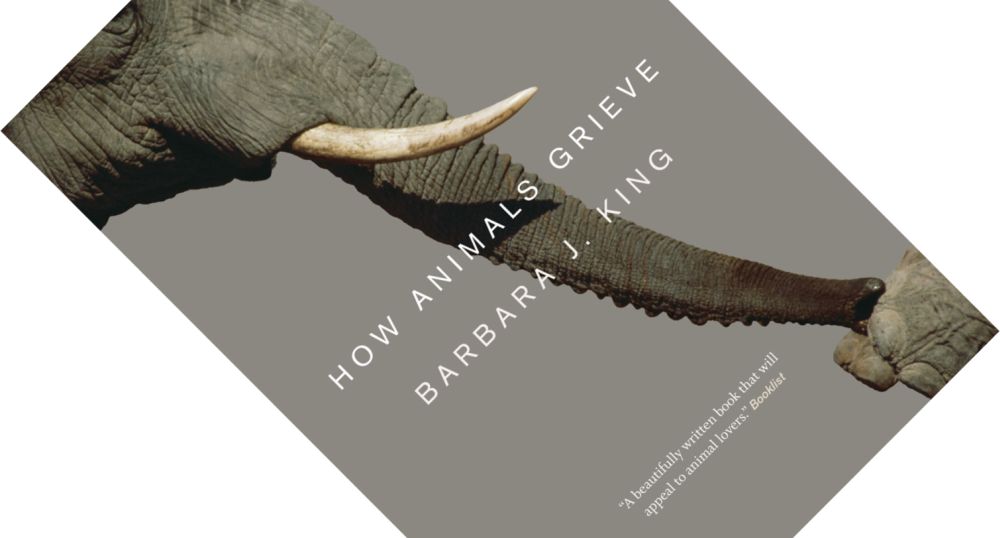
How Animals Grieve, written by Barbara J. King, published by the University of Chicago Press in April 2014 (paperback, 193 pages)
This is largely a book of stories and observations made by scientists, zookeepers, pet owners, and others who share their lives with animals. King introduces you to elephants who will seek out the bones of fallen comrades to caress and explore them with their nimble trunks. There are heartbreaking tales of dolphins keeping afloat dead calves and monkeys carrying around dead infants, to the point of corpses starting to rot and mummify. Pet owners who have had multiple cats, dogs, or rabbits widely report how survivors are affected by the loss of a companion that they have spent years with, uttering cries normally never heard or searching the house for days. Primatologists have recorded strong responses in chimpanzees and gorillas, both in captivity and the wild, to the death of fellow apes. There are touching stories here of cross-species friendships on farms and sanctuaries followed by signs of grief when one of the two partners dies. There is even the thought-provoking question of whether animals can suffer so much that they are driven to suicide. How Animals Grieve flows over with stories that will tug at your heartstrings.
Now, a hard-nosed sceptic might just see a collection of unlikely stories here but I am reminded of what Carl Safina wrote in Beyond Words: how his mental bin labelled “unlikely stories” is getting cluttered. You can only ignore a steady piling up of anecdotal observations for so long. King, while moved by these stories, keeps her composure and examines the matter with the eyes of a scientist. There are noticeable commonalities when a companion dies: distress, loss of appetite and weight, a lacklustre or dejected attitude with a loss of interest in one’s environment, acting out, displays of aggression, etc. Animals of many stripes show such behaviours. An initial and, by her admission, not completely perfect definition of animal grief hinges on two ingredients. First is love as evidenced by a strong drive to be close to each other. Second is the suffering that follows when animals can no longer be together. We cannot always observe separation in the wild, and this definition does not distinguish between different kinds of love, but her starting point is that: “When we find animal grief, we are likely to find animal love, and vice versa. It’s as if the two share emotional borders” (p. 10).
“{King’s] starting point is that: “When we find animal grief, we are likely to find animal love, and vice versa. It’s as if the two share emotional borders” (p. 10).”
Particularly interesting is the neurobiological work on animal grief that King discusses here. The authors of a 2011 study![]() looked at the biology of depression and observed that stress has a neurophysiological impact, leading to brain damage. The resultant inflammatory response to repair it leads to psychological pain. Is this what we experience as grief? King quotes one of the authors who summarises their findings thus: “Grief is an evolved behavioral program, akin to sickness behavior, that promotes convalescence during a significant neural rewriting job” (p. 50). It responds to earlier work by John Archer who in The Nature of Grief instead argued that grief might be evolutionarily maladaptive but also an unavoidable corollary of a more useful separation response that drives individuals to reunite when separated. I have to admit that Archer’s explanation appeals as well and reminds me of what Justin Gregg wrote about human morality (and its failings) in If Nietzsche Were a Narwhal: “You cannot have that laundry list of positive cognitive skills without the negative consequences” (p. 154 therein).
looked at the biology of depression and observed that stress has a neurophysiological impact, leading to brain damage. The resultant inflammatory response to repair it leads to psychological pain. Is this what we experience as grief? King quotes one of the authors who summarises their findings thus: “Grief is an evolved behavioral program, akin to sickness behavior, that promotes convalescence during a significant neural rewriting job” (p. 50). It responds to earlier work by John Archer who in The Nature of Grief instead argued that grief might be evolutionarily maladaptive but also an unavoidable corollary of a more useful separation response that drives individuals to reunite when separated. I have to admit that Archer’s explanation appeals as well and reminds me of what Justin Gregg wrote about human morality (and its failings) in If Nietzsche Were a Narwhal: “You cannot have that laundry list of positive cognitive skills without the negative consequences” (p. 154 therein).
King admits that not all examples she discusses here are airtight. When we move away from primates and other social mammals, gauging what is going on becomes harder. Do intelligent birds such as corvids grieve? Marzluff & Angell think they do, but probably not for very long. And what about sea turtles? Hawai’ian locals who in 2008 erected a memorial for a slaughtered turtle observed a male visiting it and sticking around for hours. King admits it is hard to know what was going on here, despite the spin immediately put on it by media reports. Some cases may seem far-fetched but I am reminded of Safina’s pithy conclusion in Beyond Words about how humans and other animals are all shaped by the same evolutionary forces: “beneath the skin, kin” (p. 324 therein). We are all built on the same meat-and-bones platform, running on the same bio-logic, if you will. This is an area ripe for further study and drives home a point King makes midway through the book: “We won’t have a hope of finding […] grief until we look for it” (p. 105).
“though death and grief often co-occur, they do not have to […] not grieving is not equal to not understanding death.”
There are three take-home messages for me in this book that I want to call out. First, King early on highlights that, though death and grief often co-occur, they do not have to. Grief does not require “a cognitive mastering of the concept of death” (p. 14) and not grieving is not equal to not understanding death. This distinction will be particularly relevant when we next turn to Monsó’s book Playing Possum. However, King muddies the water somewhat: despite this caveat, she almost exclusively discusses grief in the context of death, with other contexts only given incidental mention and not explicitly examined. It could well be that such data were simply not available at the time of writing because of the anthropocentric biases in what researchers choose to study, as Monsó would later highlight. If so, King does not comment on it, nor call for researchers to examine grief in other contexts.
Second, and tying in with this, is how King highlights both intra- and interspecific variation in grief. Intraspecific variation means that not all individuals of a species will express grief, though that for King does not negate the phenomenon at large. I would argue that the distinction the late Frans de Waal made between emotions (observable bodily and mental states) and feelings (subjective internal states) offers another useful way of thinking about this. Furthermore, especially in primates, we have clear examples of individuals showing different responses to death: aggressive displays, touching (or not) of the body, and avoidance (or not) of the room where the companion died. Interspecific variation means that there is no universal way of grieving across species: “Goat grief […] is not chicken grief […] is not chimpanzee grief or elephant grief or human grief” (p. 7). As an anthropologist, she thinks humans are exceptional in being able to anticipate future grief when someone falls ill, sometimes months or years ahead of time. However, acknowledging such differences “need not amount to a manifesto of human superiority” (p. 147). Asking whether our grief is deeper than that of other animals misses the point for her: “We each are what we are, animals bound together by our various ways of grieving” (p. 148).
“Interspecific variation means that there is no universal way of grieving across species […] Asking whether our grief is deeper than that of other animals misses the point”
Third, the study of animal grief has value for anthropology. We have scattered evidence of purposeful burials as far back into prehistory as approximately 100,000 years ago and possibly older, but were these accompanied by grief and mourning? Excavations, grave-good inventories, bone analyses etc. cannot answer this question, but the body of observations discussed here can help, suggesting that grief has deep evolutionary roots. King is quick to qualify this: “It is only emotional capacity that this comparative context illuminates, though, and we would do well to keep in mind that the capacity to experience an emotion doesn’t always result in the expression of that emotion” (p. 159).
How Animals Grieve is a compelling and thought-provoking book. To my mind, King leaves little doubt that we are not alone in experiencing grief, even if the details differ between species. The consequences of what that means for how we treat animals are only all too briefly explored here, beyond her acknowledgement that we are often the cause of animal grief. If books by Carl Safina, Frans de Waal, or Marc Bekoff resonate with you, this book will too. Finally, what can all this tell us about animals’ understanding of death? I will next turn to Monsó’s book Playing Possum where we will see a thorough philosophical analysis of this question.
Both Barbara J. King and Susana Monsó were recently interviewed by the hosts of the WAMU 88.5 American University Radio show 1A as part of their Scientific Method series. You can listen to that 34-minute episode here.
Other recommended books mentioned in this review:
__________________________________________________________________
__________________________________________________________________

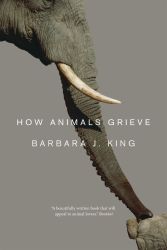
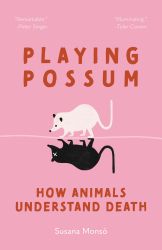
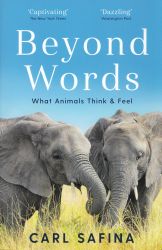



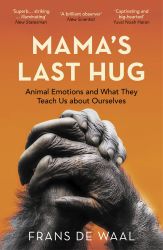
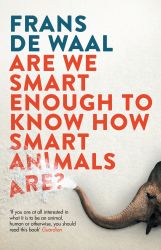
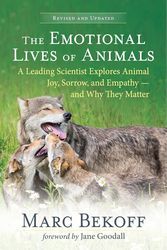
5 comments